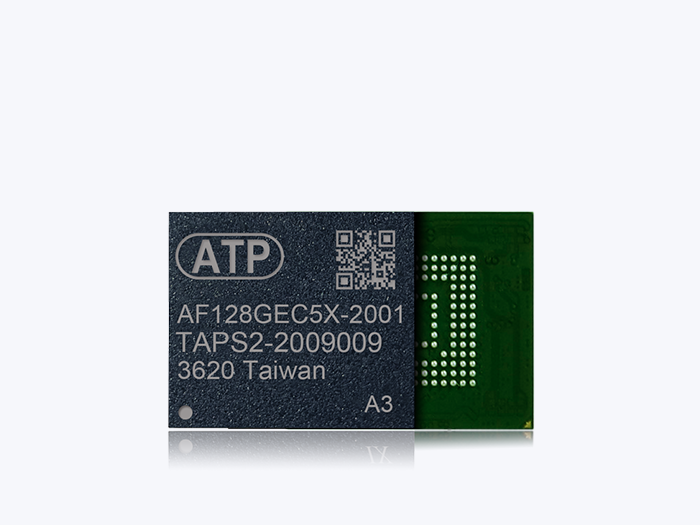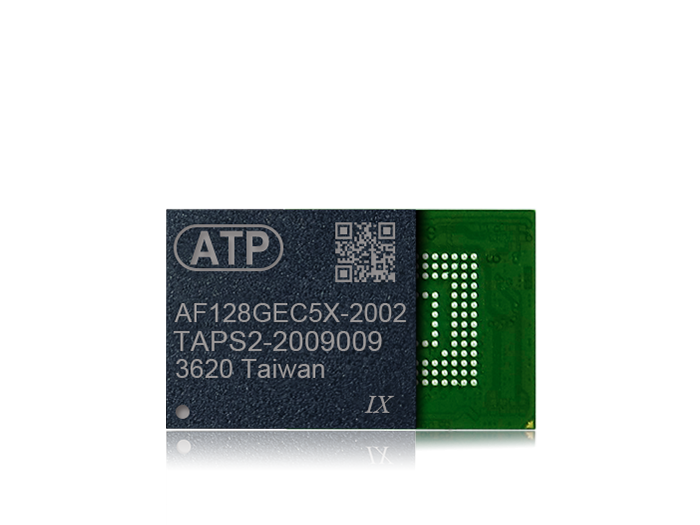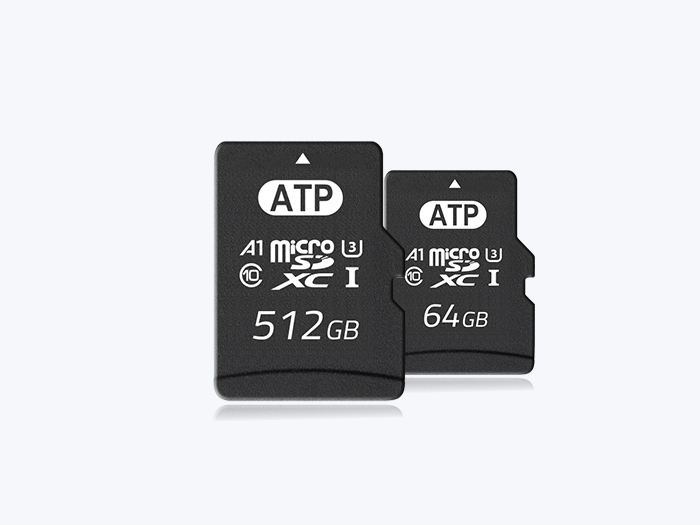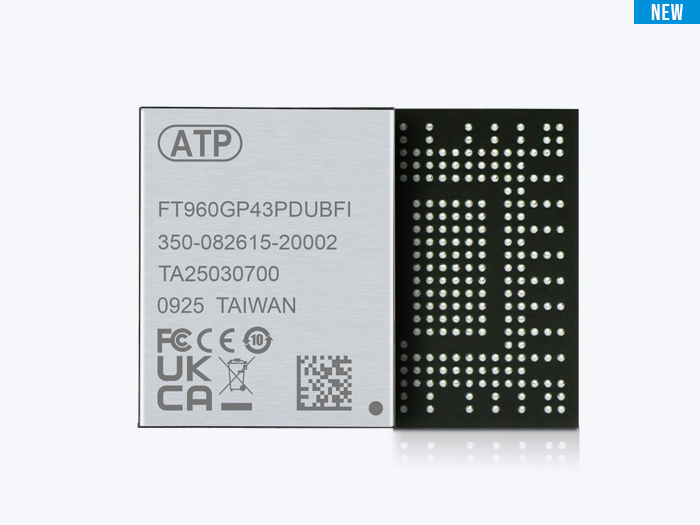LEO satellites are increasingly being harnessed for commercial, defense, scientific, and a multitude of other uses. In the harsh environment of space, robust memory and storage solutions are critical to ensuring the reliability, system stability, and operational efficiency of these satellites, whether they are used for data processing, real-time communication, or large-scale Earth observation.
Advantages of Low Earth Orbit (LEO) Satellites
LEO satellites encompass orbits close to the Earth’s surface at altitudes ranging from 160 to 2000 km. Most LEO satellites are concentrated below 800 km and are primarily used for communication and Earth observation. These applications require high-capacity memory to store large volumes of communication and telemetry data, especially for high-resolution imagery or video transmission.
Due to their unique advantages of low orbital deployment and broad application usage, the market for LEO satellites is growing. It is projected to reach USD 31.15 billion by 2033 with a compound annual growth rate (CAGR) of 21.4% during the forecast period from 2025 to 2033. (Source: Business Research Insights).
The Challenges of Storing Data in Space: Effects of Radiation Exposure on Electronic Components
LEO satellites operate in harsh space environments, where memory modules and NAND flash storage must endure extreme conditions, including long-term exposure to radiation and temperature fluctuations.
The near-earth environment is filled with high levels of cosmic rays and solar radiation, which can lead to total ionizing dose (TID) degradation and single-event effects (SEE). These effects can cause data corruption and loss, making it crucial for memory and storage to be radiation-hardened/tolerant to ensure data integrity and system reliability.
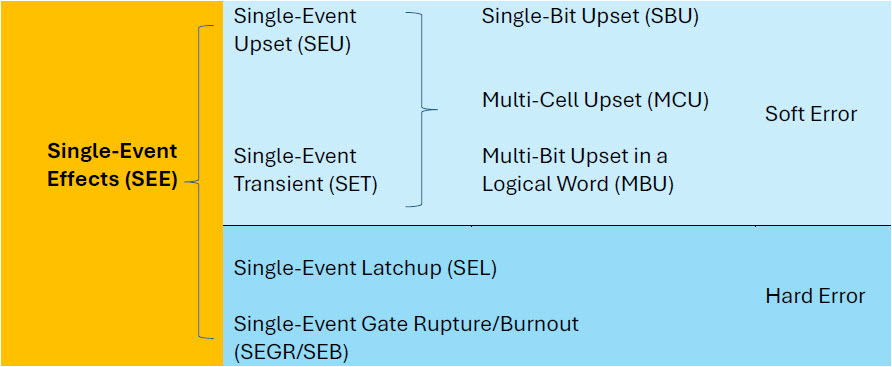
High levels of cosmic rays and solar radiation can lead to total ionizing dose (TID) degradation and single-event effects (SEE), which can increase bit error rates.
Radiation Hardness to Radiation Tolerance
While radiation-hardened components are built to withstand intense radiation, radiation-tolerant systems rely on redundancy and error correction to manage the effects of radiation. Compared to deep-space or Geosynchronous Equatorial Orbit (GEO) applications, LEO applications do not require Radiation Hardness Assurance (RHA) or Space grade components. Radiation Tolerance, Industrial Grade, Automotive Grade or “Careful” COTS (commercial off-the-shelf) components are widely adopted in LEO missions.
ATP Radiation-Tolerant Memory Solutions for LEO Satellite Applications
ATP ensures the performance and reliability of its memory and storage solutions for LEO applications through extensive testing and validation. ATP simulates the LEO environment and subjects its solutions to manage the effects of radiation in space while maintaining data integrity and reliability.
End-to-End Data Path Protection: Mitigating Soft Errors from Radiation
ATP Electronics' SSDs feature a robust End-to-End (E2E) Data Path Protection mechanism, which ensures data integrity across all stages of data transmission and storage from the host to the NAND flash storage device controller.
E2E protects ATP SSDs from signal degradation, prevents data corruption or loss during power interruptions, mitigates read disturbances, and reduces uncorrectable error rates.
Buffering Data: At DRAM (optional) and SRAM (controller) levels
- SECDED (Single Error-bit Correction, Double Error-bit Detection) for error correction and detection
- E2E (End-to-End) protection generates E2E parity
- More refresh cycles (DRAM) to maintain data integrity
Storage Data: At NAND flash level
- RAID Parity is implemented to detect and correct errors, ensuring data reconstruction if a drive in the set fails
- LDPC (Low-Density-Parity-Check) Engine and Read Retry mechanisms are employed to enhance data reliability
ECC Analysis for Post Irradiation Test*
After radiation testing, ATP can provide error correction code (ECC) analysis services. With an appropriate error handling firmware (FW) architecture, the operation storage device in a sample test has lower ECC compared to the non-operation storage device.
The graphs show the effectiveness of ATP’s ECC after significant radiation exposure. There are no later bad blocks (no UECC in both samples), and during operation, the firmware error handling mechanism helps to recover errors.
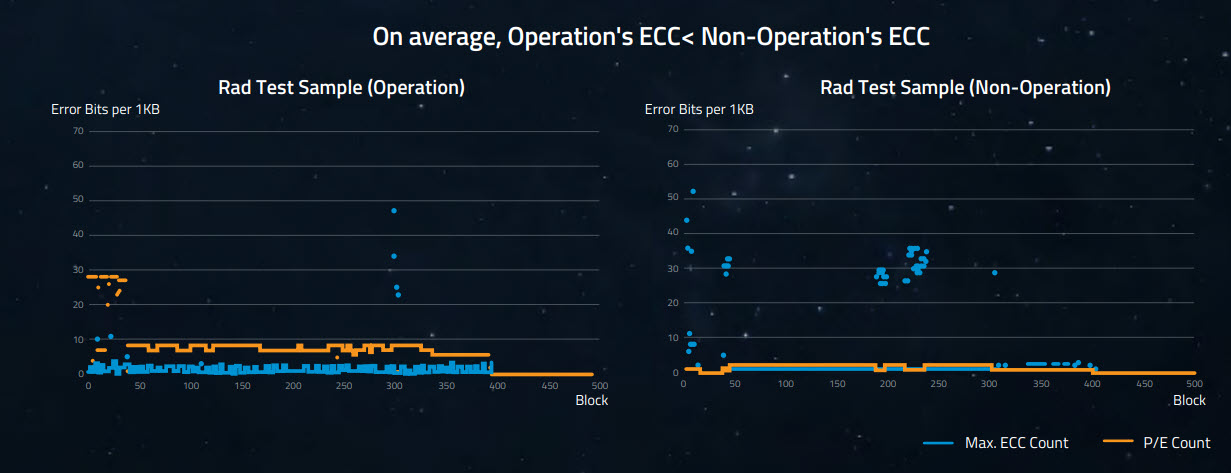
The effectiveness of ATP’s ECC after significant radiation exposure is a key factor in determining the storage device’s suitability for space applications as it directly impacts the reliability of data storage in LEO satellites.
WE BUILD WITH YOU
ATP LEO Services, Testing, and Features
ATP offers a wide range of NAND flash storage that meets the arduous requirements of storage in radiation-intense environments, such as LEO satellites. Specifications, testing, and packaging may be tailor-fitted to meet satellite mission requirements.
- Flying heritage*
- Ultra-low-alpha packaging material*
- Event Log Analysis*
- Longevity and controlled BOM for qualified products
- Self-packaged IC and screening test
- Rapid Diagnostic Test (RDT): 100% Screening for NAND error bits before delivery
- S.M.A.R.T. Health Report (Command, API, Software)
- Industrial Operating Temperature Grades: Grade 3 (-40°C to 85°C) and Grade 2 (-40°C to 105°C)
* Available on selected products. Contact ATP for more details.
Conclusion
As the satellite industry grows, the need for reliable memory and data storage solutions in LEO satellites becomes increasingly critical. Memory and storage in space face unique challenges, making them susceptible to radiation exposure and extreme temperatures.
Choosing the right memory and storage for LEO applications is critical to the success of the mission. Widely known for implementing the strictest standards of specialized design, manufacturing, and testing, ATP Electronics spearheads the development of space-worthy solutions that meet the demanding requirements of LEO applications.
For more information on ATP memory and NAND flash storage for LEO applications, contact an ATP Distributor/Representative in your area or visit the ATP website.
